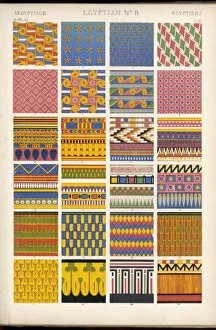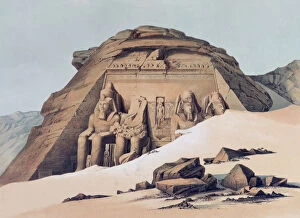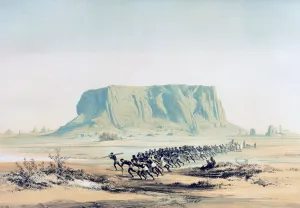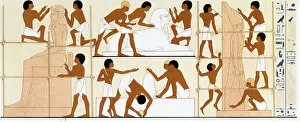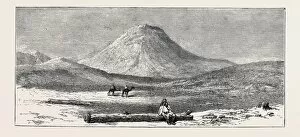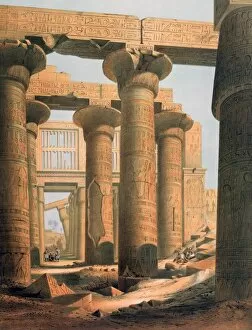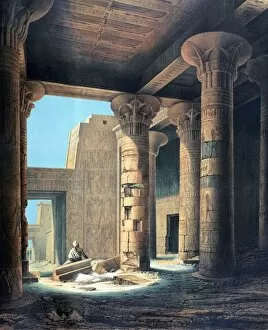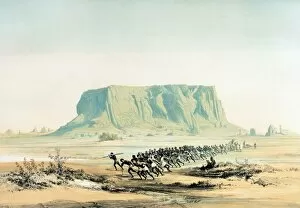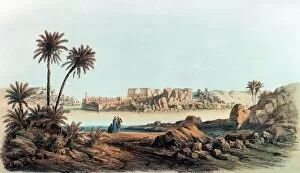Lepsius Collection
"Lepsius: Capturing the Magnificence of Ancient Egypt through Art" Step into the world of ancient Egypt with Lepsius
All Professionally Made to Order for Quick Shipping
"Lepsius: Capturing the Magnificence of Ancient Egypt through Art" Step into the world of ancient Egypt with Lepsius, a renowned artist who beautifully depicted the wonders of this fascinating civilization. Inspired by Owen Jones' Egyptian designs, Lepsius embarked on an artistic journey that would leave a lasting legacy. With his skilled hand and keen eye for detail, Lepsius transported us to iconic sites such as the Temple of Abou Simbel and the Temple of Esneh. Through his brushstrokes, we witness the grandeur and majesty of these architectural marvels that have stood the test of time. Intricate interiors come to life under Lepsius' talented hand. The Hall at Karnak reveals its intricate carvings and towering columns, while Philae's Inner Temple exudes an aura of mystique and spirituality. These paintings allow us to immerse ourselves in the sacred spaces where ancient rituals were once performed. It also takes us beyond Egypt's borders, capturing breathtaking landscapes like Mount Barkal in Sudan. His artistry transports us to distant lands, evoking a sense of wonder at nature's beauty. Not limited to monumental structures or natural vistas alone, it also sheds light on everyday life in ancient Egypt. In one painting, we glimpse sculptors diligently working on statues - their dedication evident in every chisel mark. This intimate portrayal offers a glimpse into the craftsmanship that brought these timeless masterpieces to fruition. Beyond his depictions of ancient wonders lies another facet - Stuler August's sketches reveal Prof. Lepsius' own abode in Berlin. A testament to his passion for architecture and design even outside his artistic pursuits. Lepsius' artwork serves as a window into both past and present; it allows us not only to appreciate the splendor of ancient Egypt but also invites contemplation about our own place in history.

